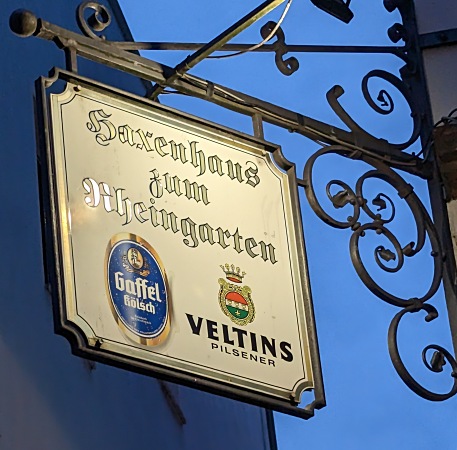The city has been subject to occasional flooding and he pointed out these markers showing the record river levels. These were on the outside of Papa Joe's Jazz bar which claimed to be the oldest in Germany.
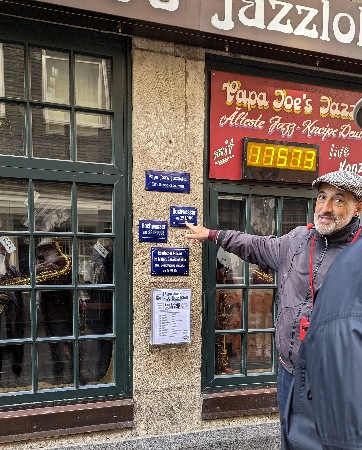
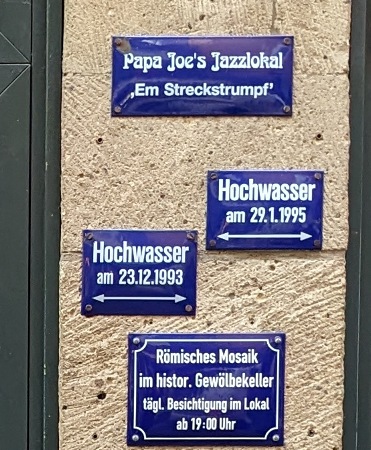
From there we saw the beer museum with something for every palate.
We didn't stop there, It was early and we had a lot of sightseeing to do.
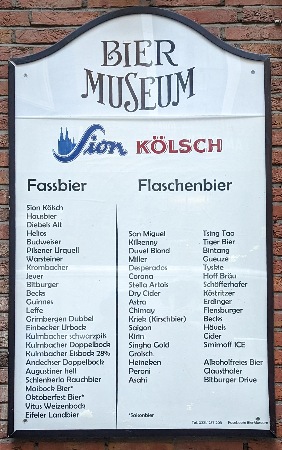

Our first view of the Cathedral of Cologne steeples then a bit later from across the Heinrich-Böll-Platz.
The plaza is the roof of the Cologne Philharmonic and there can be problems during concerts with noise from activities on the square.

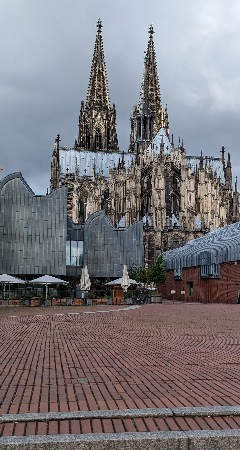
Locks on bridges are common all over the world and especially in Europe.
Couples place the locks then throw the key into the river to symbolize their unbreakable love.
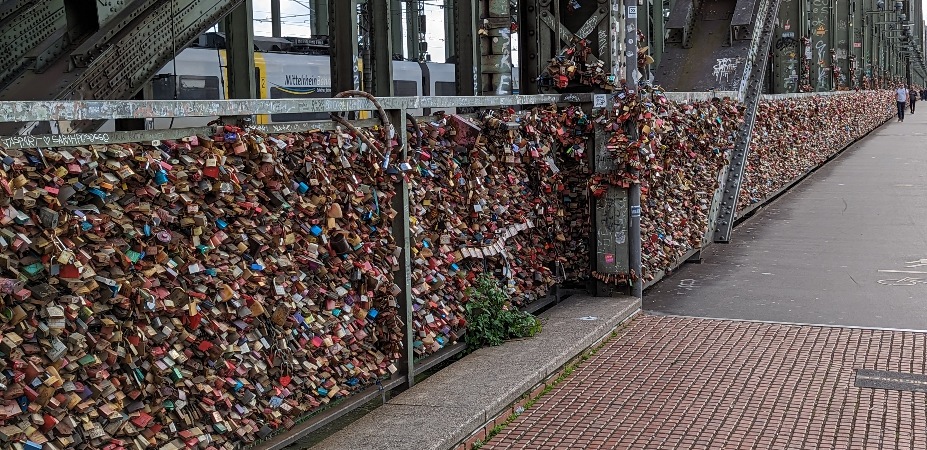
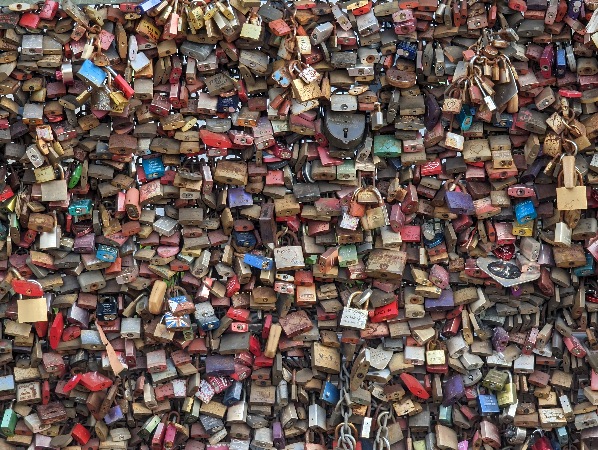
The last German Emperor and King of Prussia, Kaiser Wilhelm II.
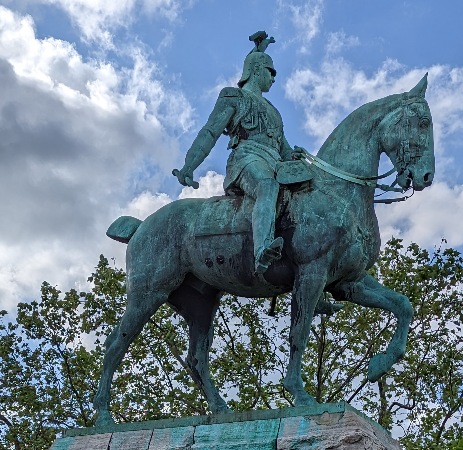
Cathedral Church of Saint Peter or more simply the Cologne Cathedral.
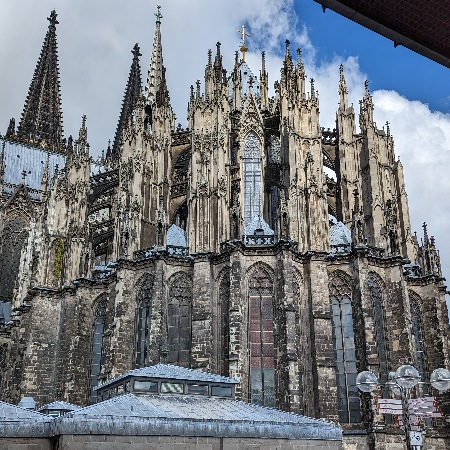
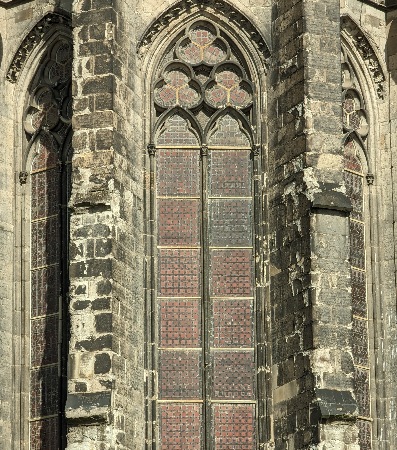

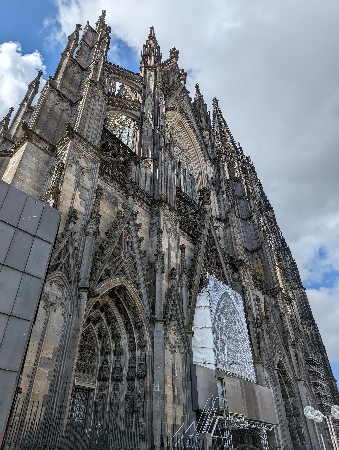
Gargoyles
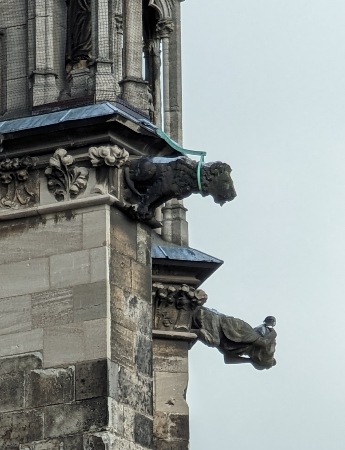
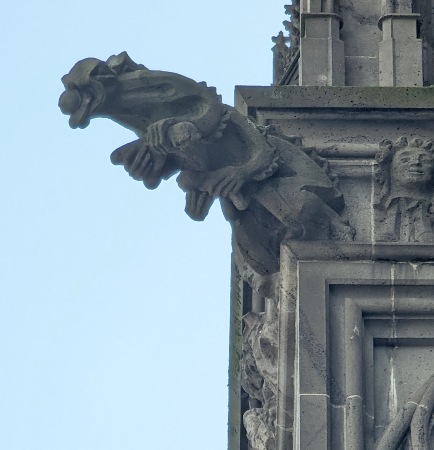
Parts are being replaced.
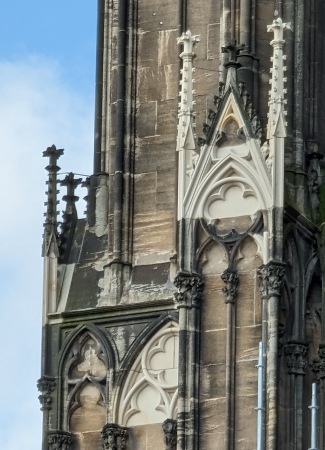

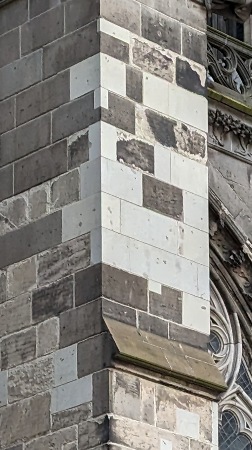
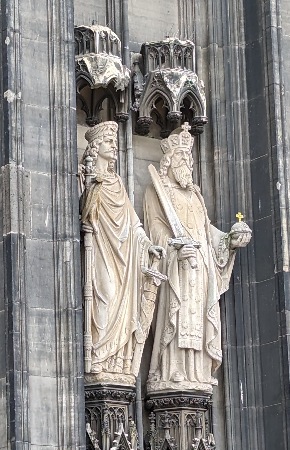
Or have been removed and will have a duplicate carved for a replacement.
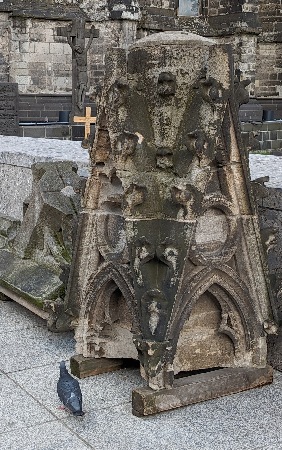
Damage from a bullet during the WW I or II
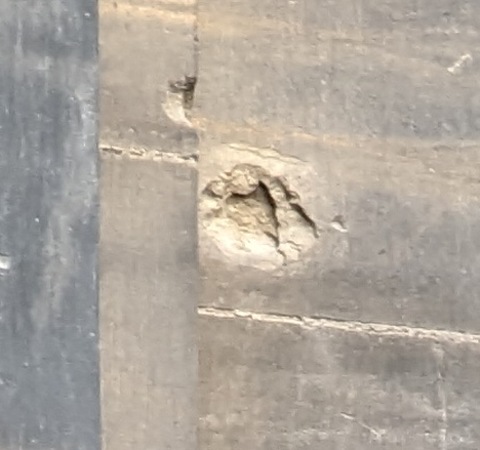
Inside the Cathedral the stained glass is impressive.
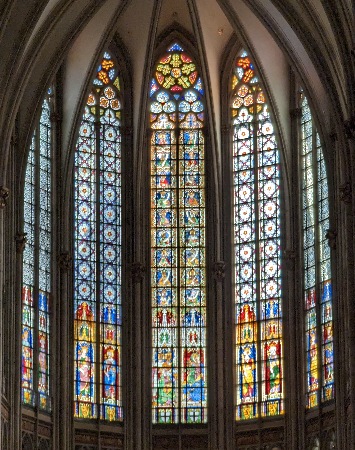
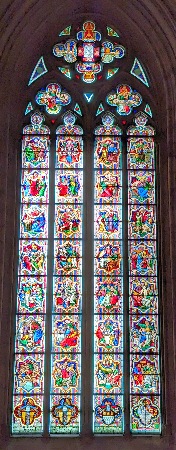
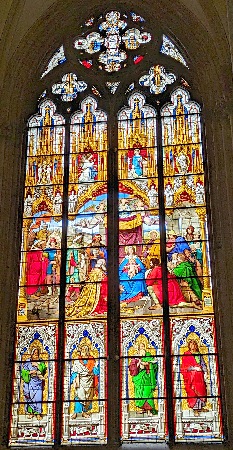
Each panel reminds one of a bible story.
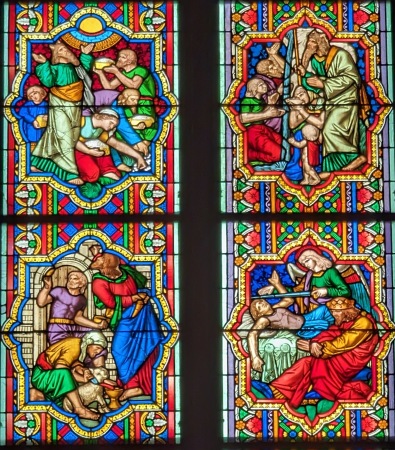
This is Moses being found by the Pharaoh's daughter
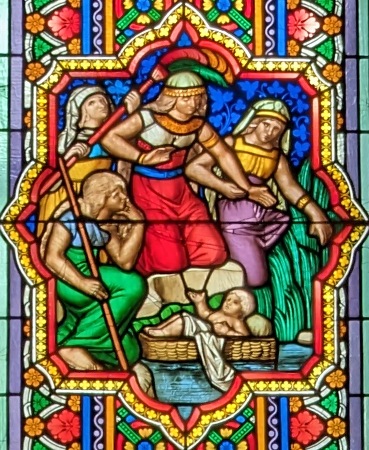
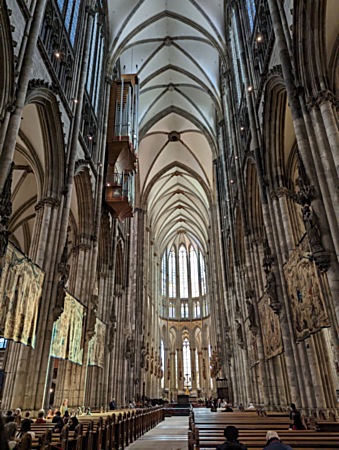
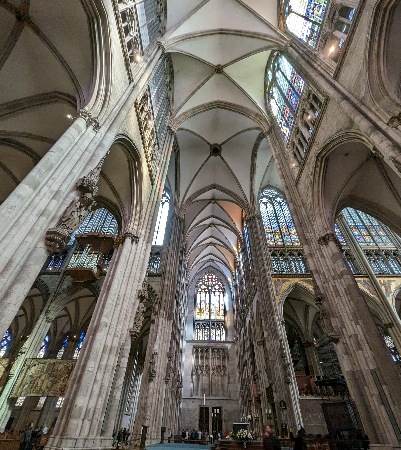
Other visitors just outside the Shrine of the Three Kings or Tomb of the Three Magi or the Three Wise Men.
It is a reliquary traditionally believed to contain their bones.
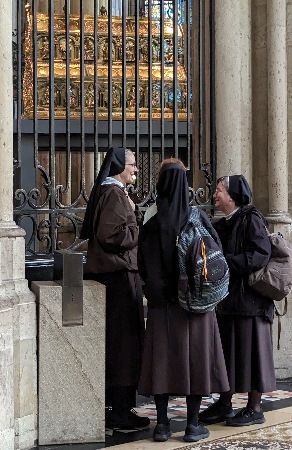
Tomb of Archbishop Philipp of Heinsberg in Cologne Cathedral.
Fortress walls to protect him.
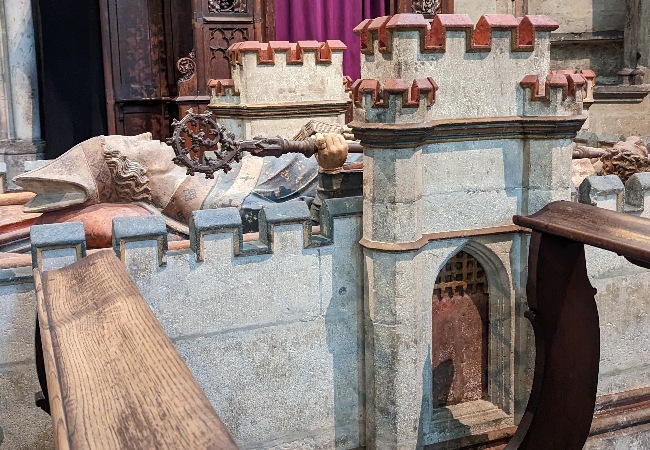
Chalk artwork outside the cathedral representing many countries


Ancient stonework discovered during construction near the cathedral
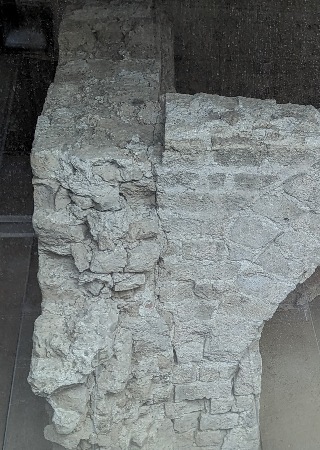
And a final shot of the cathedral
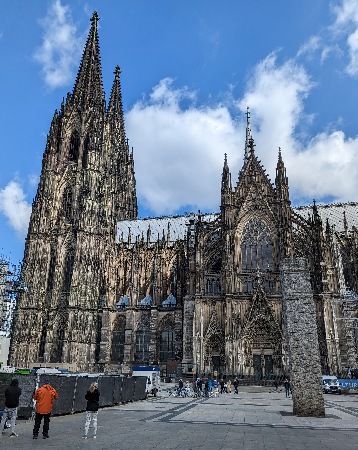
Johann Maria Farina the inventor of Cologne and a display of the perfume.
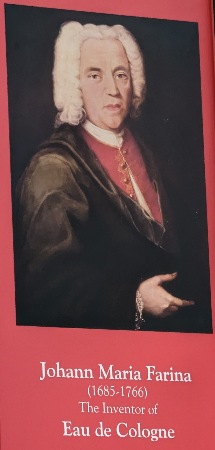
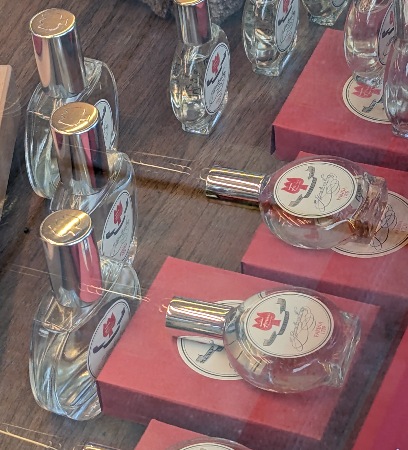
Across from City Hall is another point of interest the “Kallendresser”.
Possibly a political statement.

The City Hall has a statue of Konrad von Hochstaden Archbishop of Cologne from 1238 to 1261 supported by this poor fellow.
Please don't ask for an explanation.
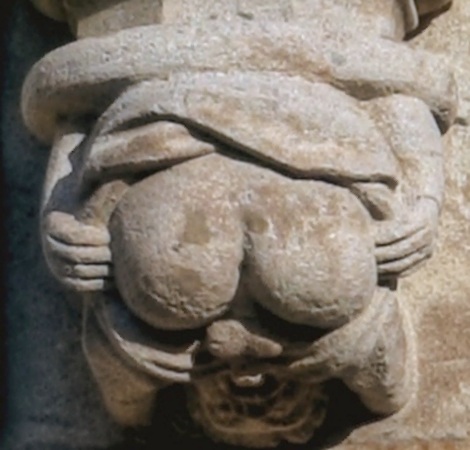
The Town Hall has a clock with even more rudeness.
this time a face that sticks out his tongue periodically.
It is supposed to do it on the hour but seems to be late.
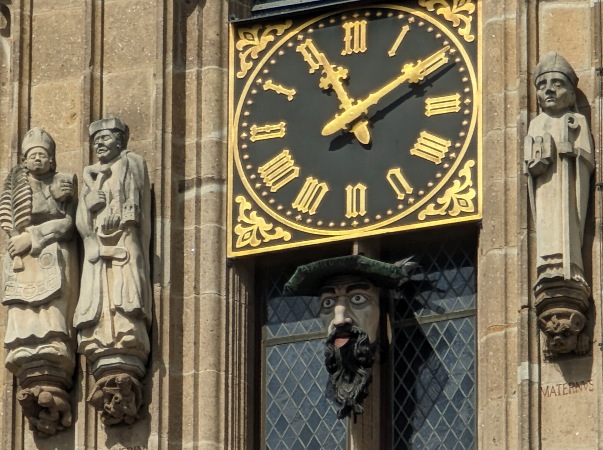
Kaiser Friedrich Wilhelm III, King of Prussia, Heumarkt square with pigeon
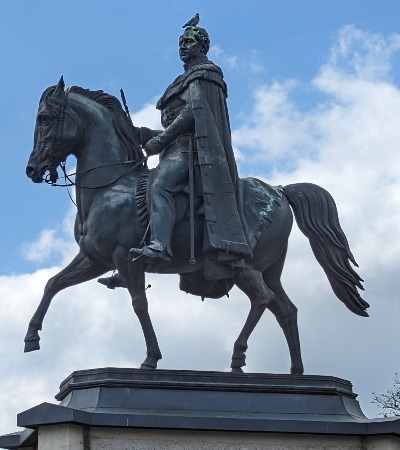
Now off to the Augustusburg and Falkenlust Palaces in Brühl about a half hour drive.
The Augustusburg plaice was built atop the ruins of a medieval moated castle in the mid 1700's.
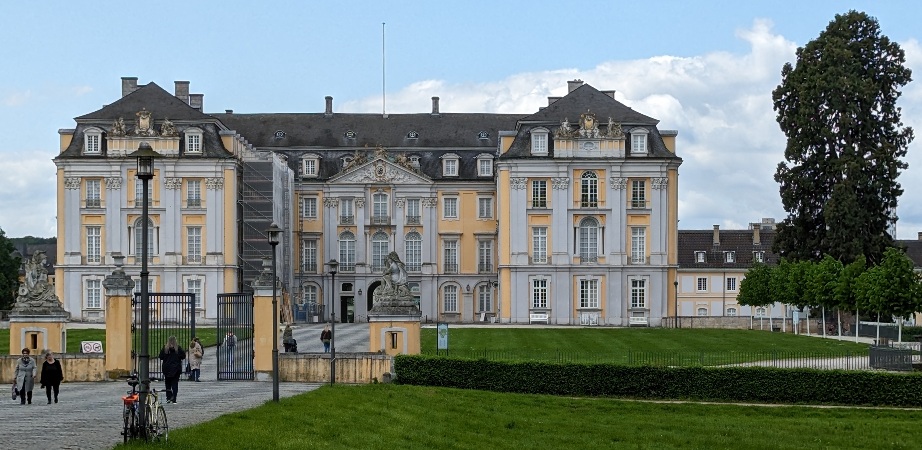
Te entrance is flanked by a statue of a woman with a sword and a man sitting on the carcass of a lion
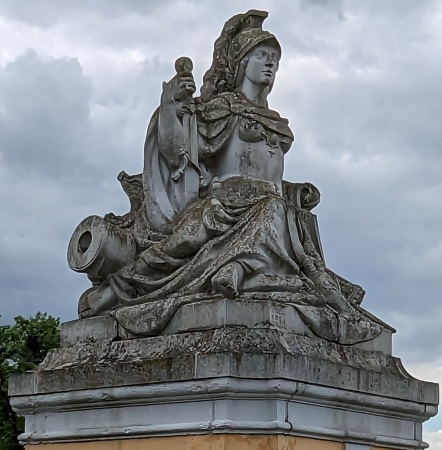
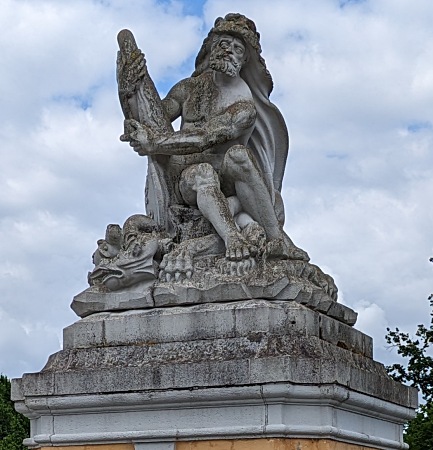
The frieze over the entrance.

The entrance hall establishes the Rococo style of the entire palace.

A stove for heating one of the rooms.
It was fueled by servants through an opening in the wall behind it.
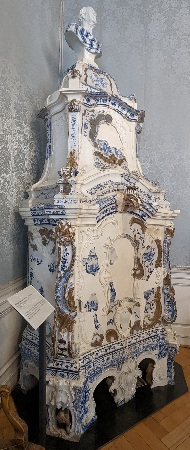
Just a few pictures to show how ornate the palace is.
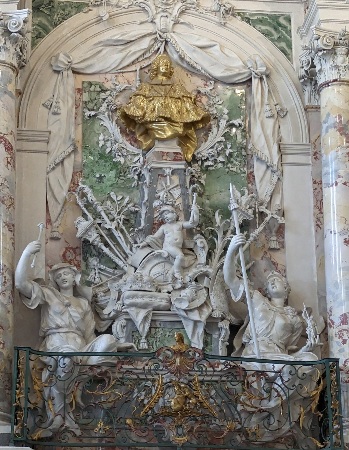
Some of the ceilings look like there are domed but are flat and just painted to appear curved.
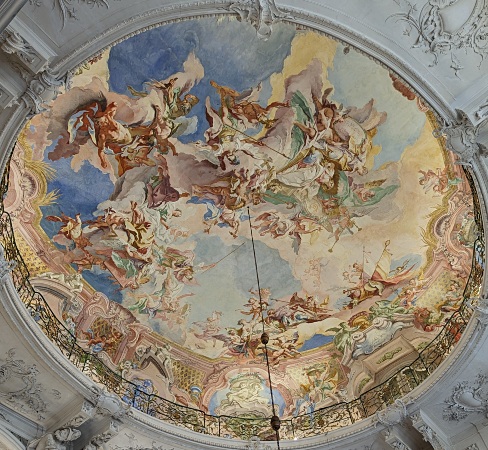
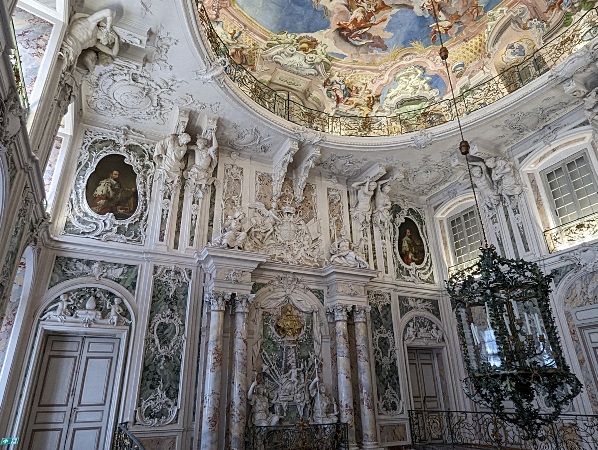
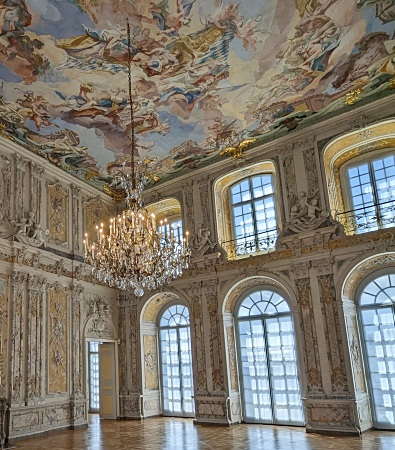
Dinner is served. Note the bug decorating the plate.
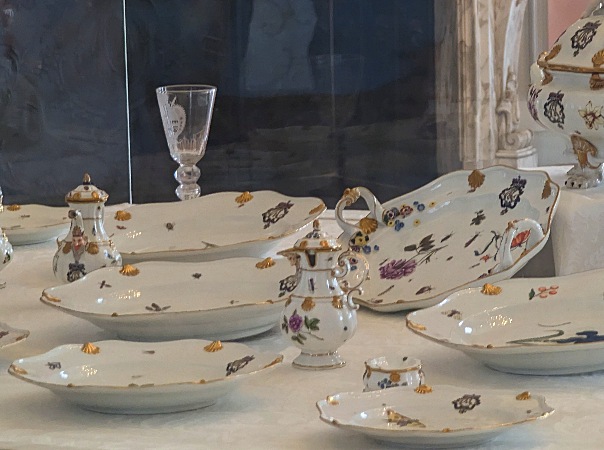
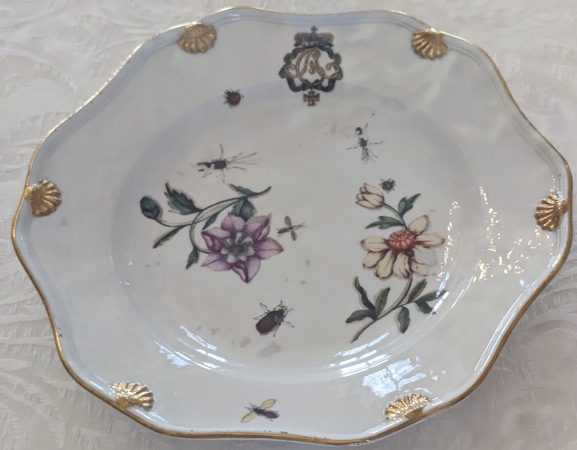
The gardens behind the pa lice.
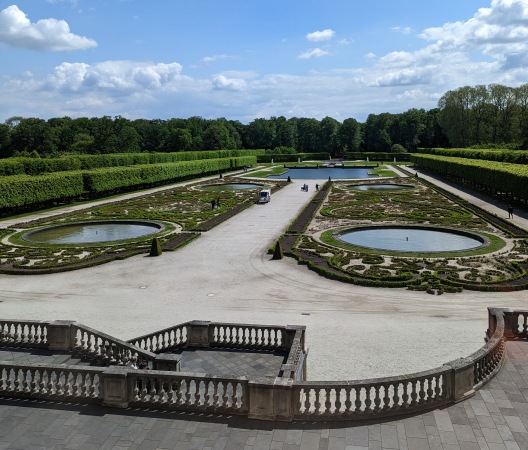
And looking back from the far end of the garden this is what we saw.

A 10 minute drive to the Falkenlust Palace took us through hundreds of acres of rhubarb fields.
I h ad never considered that there must be somewhere that it is grown commercially.
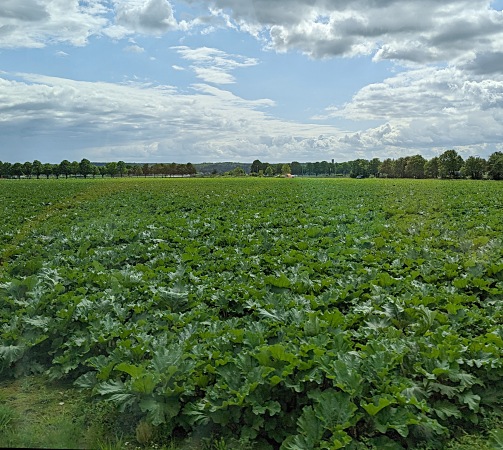
This is the "hunting lodge" for Cologne elector and Archbishop Clemens August and his guests when they visited him at Augustusburg.
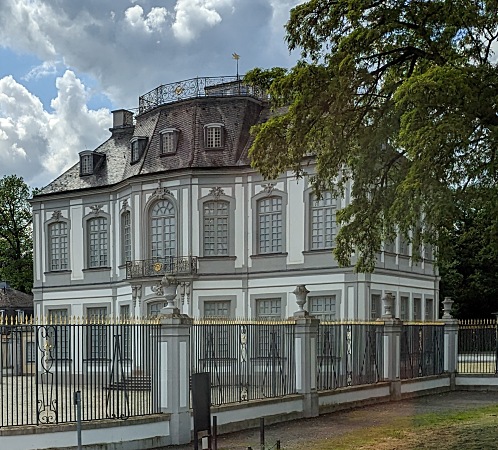
Falconry was the sport of choice.
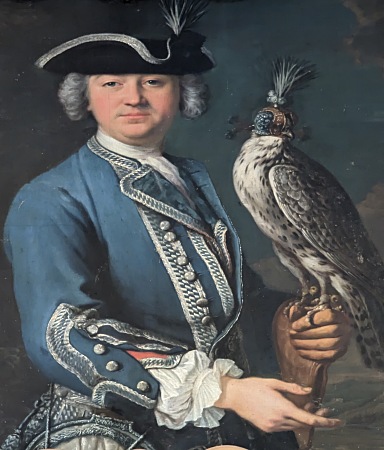
And the prized game were herons.
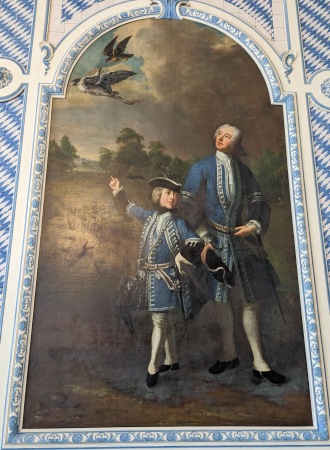
They were taken alive and a band was placed on their leg before they were released.
Here a young guest is about to do the honors.
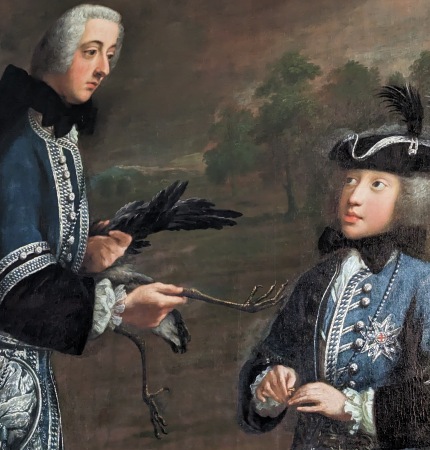
The inside was decorated in lavish Rococo style.
Many marble statues and tiled walls.
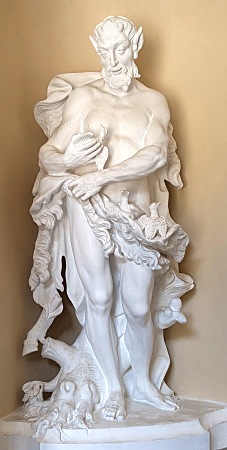
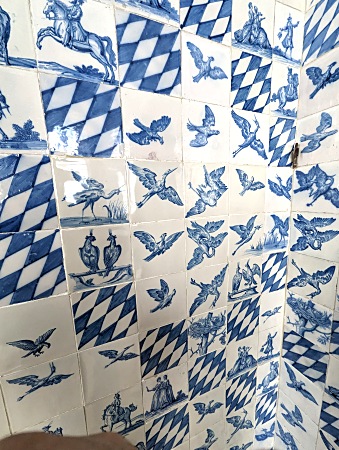
There was a display of how the pictures were printed and fused to the tiles.

On the grounds nearby was the Muschelkapelle St Maria Aegyptiaca.
The first word of its name translates as "shell chapel" because all of its walls and floors inside and out are decorated with thousands of shells.
There are also minerals and crystals to get a variety of colors.
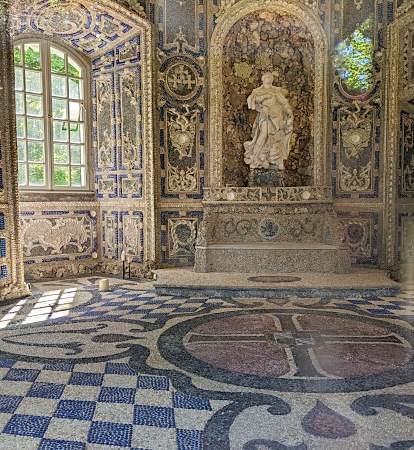
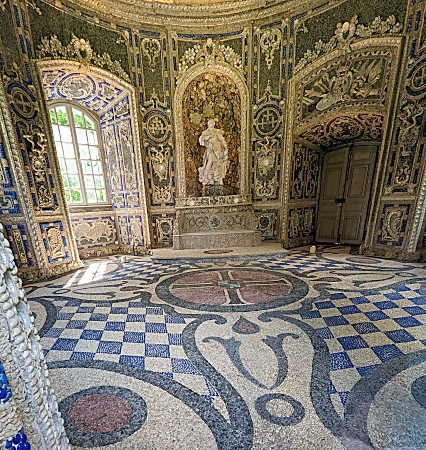
Then back to Cologne to visit Peters Brauhaus where we sampled their brew.
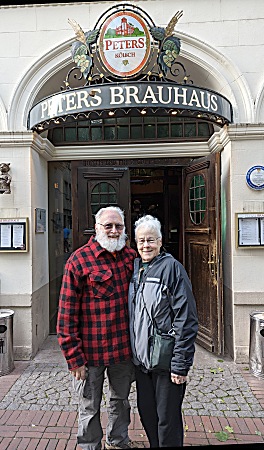

On to another brauhaus where we had a meal not just brew.


But of course we had to sample their refreshments.
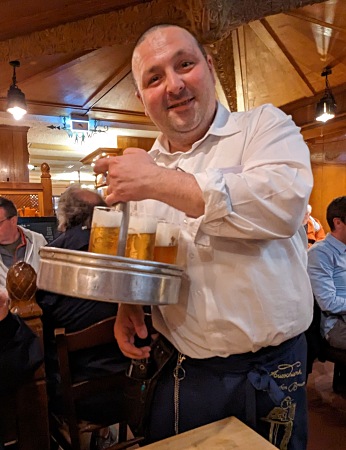
We didn't stop at every opportunity. Here are a couple we passed up.
Guess we will have to go back.

